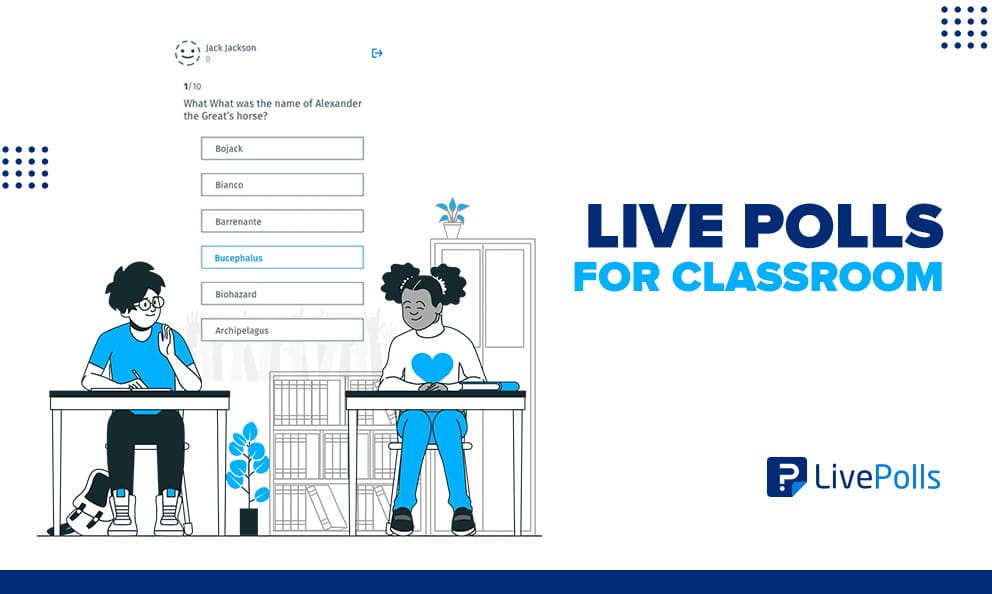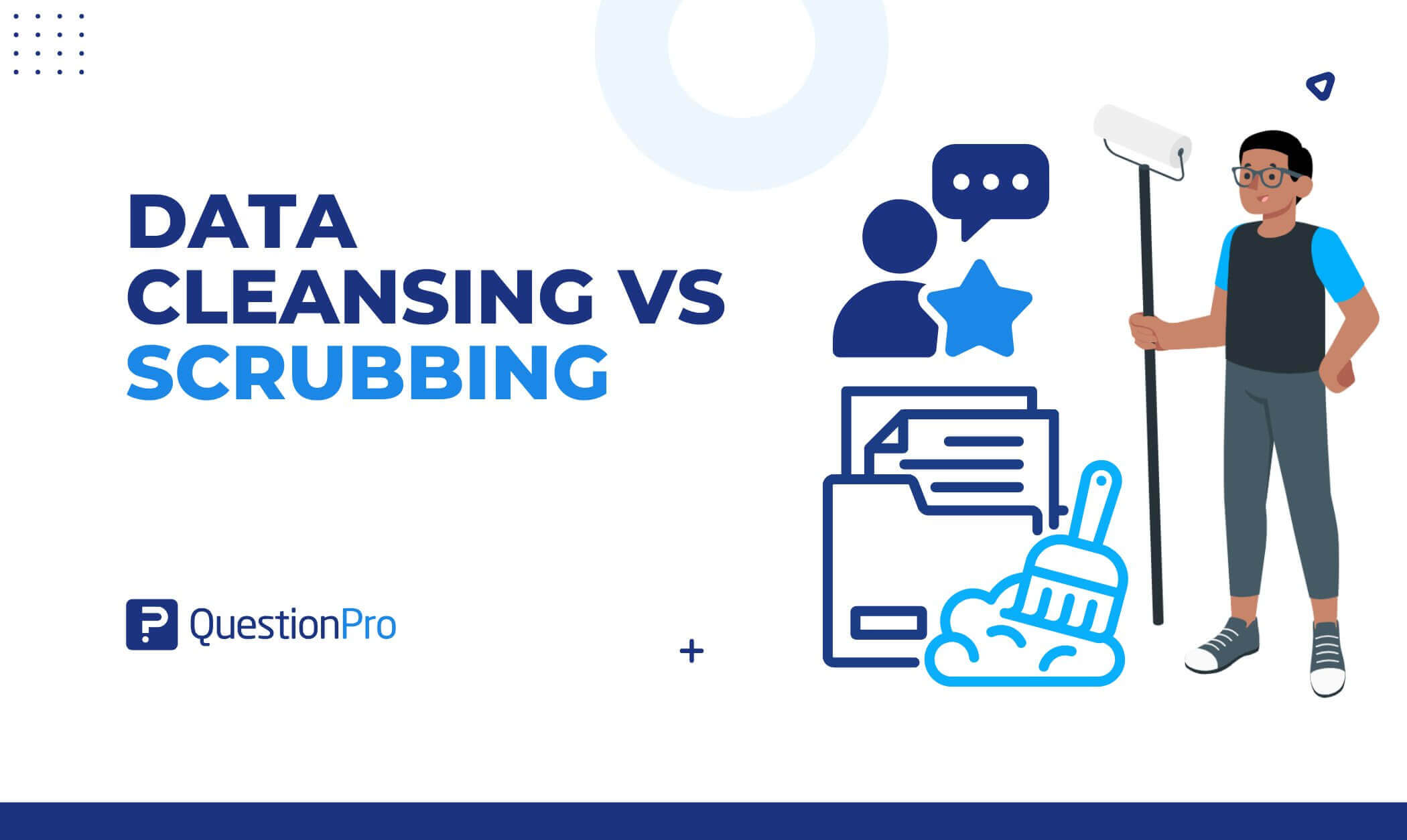
Teachers have an increasingly complex challenge, coupling new technologies and gadgets in the class. A great way to promote class participation is by using new technologies. Students can express their opinions and give feedback in real-time using these tools. A great example is the increasing popularity of online surveys and live polls for classroom experience.
Most professors seek ways to encourage participation, track student learning experience, or collect impressions and opinions through simple forms of voting and obtaining information. The classroom response system allowed students to answer multiple-choice questions and engage in real-time discussions instantly.
In addition, thanks to new technologies, we have many applications and systems that can be used quickly, efficiently, and for free. Let’s talk about it.
What is a Live poll?
A live poll is an interactive polls tool or feature that allows individuals, such as students in a class setting or participants in a meeting or event, to vote or provide real-time feedback. It typically involves presenting a question or multiple-choice options to the audience, who can respond immediately using their mobile devices, computers, or other electronic devices.
The live polling results are typically displayed instantly on a shared screen or projector, allowing participants to see the aggregated responses. This real-time feedback encourages active engagement and participation and provides valuable insights to the presenter or instructor.
What are Live polls for The Classroom?
Live polls for the classroom are tools that use students’ questions and data to improve the learning experience. We’re experiencing a new approach to teaching in the digital era using technological tools.
Teaching has the task of innovating in the tools it uses to capture students’ attention while implementing new methods or systems that improve the effectiveness of classes.
Student polls and classroom surveys may be underestimated. Their potential is much broader than what is currently used by most professors.
Student participation can constantly improve. Interactive activities are the ideal way to achieve this. Students can also use surveys and online questionnaires in their projects.
Encourage Participation for Live Polling in The Classroom
How to encourage live polls for the classroom Encouraging participation in live polls in the class can significantly enhance the learning experience for students. Here are some strategies to promote engagement and active involvement:
-
Set clear expectations:
Communicate the purpose and benefits of live polling to your students. Explain how their participation will contribute to a more interactive and engaging learning environment.
-
Choose relevant and thought-provoking questions:
Select poll questions relevant to the lesson or discussed topic. Pose open-ended questions that require critical thinking and encourage students to reflect on their understanding.
-
Create a safe and inclusive environment:
Foster an inclusive classroom culture where all students feel comfortable expressing students’ opinions and ideas. Assure students that live polls provide an anonymous platform for sharing their thoughts.
-
Incorporate gamification elements:
Introduce an element of fun and competition by turning live polls into interactive games or quizzes. Offer incentives or rewards for active participation, such as bonus points, small prizes, or recognition.
-
Provide instant feedback and discussion:
Display the live polling results in real time and facilitate a discussion around the responses. Analyze the results together as a class, highlighting different perspectives and promoting critical thinking.
-
Vary the types of questions:
Mix up the question formats to keep the live polls engaging. Alternate between multiple-choice polls, true/false, and open-ended questions to cater to different learning styles and encourage diverse participation.
-
Integrate group activities:
Incorporate group activities that involve live polls, such as group debates or discussions based on the poll results. Assign students to work in teams and have them analyze the data together.
-
Reflect on the results:
After conducting live polls, take the time to reflect on the results as a class. Discuss the patterns, trends, and insights revealed by the responses.
By implementing these strategies, you can create polls with a dynamic and inclusive class environment where live polls become a regular and valued part of the learning process. Encouraging student participation in live polls enhances engagement and promotes critical thinking, collaboration, and a deeper understanding of the subject matter.
Live Polls for Classroom in the Digital Era
Students will understand the importance of collaborative work and data collection. These are students of the new age, and, like everyone else, they inhabit the digital world.
It is essential for education to evolve jointly with them in their technological evolution. Otherwise, educators would be at a disadvantage concerning the knowledge of their students.
One of the best ways to integrate new technologies into the classroom is through tools. The use of devices and software that students can easily manipulate and find entertaining is essential.
Student participation is necessary for learning development, so integrating technologies into education is inevitable.
Currently, there are several options and products to incorporate activities like live polls for the classroom. However, several teachers have found it necessary to look for the best alternative to Kahoot and Slido, for example.
These circumstances are due to the fact that the needs of the students are increasingly broad, and the search for better options is never-ending.
5 Benefits of Using Tools Like Live Polls for Classroom
It is essential to recognize that students today are interested in and engaged in technology, creating many opportunities that schools and teachers can benefit from by integrating innovation into the classroom.
Below, you can find some of the main benefits of using technology in the classroom:
1. Student engagement
Live Polls offers different opportunities to make learning more dynamic and enjoyable. When technology integrates into lessons, students tend to be more interested in their study subjects. The result allows the teaching of the same lectures in new ways. Some examples are:
-
Teaching through games and activities.
-
Taking students on virtual field trips.
-
Using other online learning resources.
Additionally, technology can encourage more active participation in the learning process, which may be challenging to achieve in a traditional conference environment.
2. Knowledge retention
Students who are engaged and interested in their lectures have better knowledge retention. As mentioned before, technology can help encourage active participation in the classroom, which is also a significant factor in increasing knowledge retention.
Teachers can use different forms of technology to experiment and decide what works best for students. They achieve it with platforms that include an extensive list of fun activities for students.
3. Teamwork
Technology can foster collaboration with students in the same room, school, and even with other classrooms worldwide. Students can practice collaboration skills by engaging in different online activities. For example, working on various projects collaborating with others in forums, or sharing documents in their virtual learning environments.
4. Individual skills
By using technology in the classroom, both teachers and students can develop essential new skills. Students can gain the abilities they will need to succeed in the future. Everyday learning can look like this:
-
Complex problem-solving.
-
Using critical thinking.
-
Enriching motivation.
-
Cooperating with others.
-
Improving productivity.
-
Developing communication skills.
-
Acquiring leadership skills.
In addition, technology can help develop many practical skills, such as creating presentations, learning how to tell trusted sources from untrustworthy sources on the Internet, maintaining proper etiquette online, and writing emails correctly.
5. Individual learning
No one learns the same way due to different learning styles and abilities. Learning becomes one of the most notorious perks of the use of technology effectively. For example, students can learn at their own pace, review complex concepts, or skip them if they need to.
Additionally, technology can provide more opportunities for struggling students. Internet access gives students access to a wide range of resources to conduct research and assignments in various ways.
Benefits for teachers
Technology can help improve teaching in many ways. Teachers can use a variety of trusted apps or online resources to enhance traditional teaching methods and keep students more engaged in the subject.
Virtual lesson plans, grading software, and online assessments can help educators save a lot of time. Teachers can use this valuable time to work with students with different needs. Furthermore, virtual learning environments in schools improve teachers’ collaboration and knowledge sharing.
Get your students excited about learning. And make the most out of your classes by making them interactive. We created QuestionPro’s Live Polls with interaction and student engagement in mind.
LivePolls by QuestionPro is an entirely free, user-friendly online polling tool that lets you conduct quick online quizzes and timed general knowledge trivia, gather instant feedback, and show the results to participants in real-time. Done well, live polls for the classroom will effectively collect your students’ insights, test their knowledge, or fire up a discussion.
Conclusion
Live polls create an inclusive learning environment by giving every student a voice. Students who might be hesitant to speak up in a traditional classroom can anonymously express their thoughts and opinions through live polls, fostering a sense of inclusivity and equal opportunity for all. While live polls have undoubtedly revolutionized the classroom experience, it is essential to acknowledge that technology is not a panacea for all educational challenges. Effective implementation requires a thoughtful and balanced approach, combining the benefits of digital tools with pedagogical best practices.
Live polls represent a promising advancement in the digital age, offering students an interactive and inclusive learning experience while providing valuable instructor feedback. By harnessing the power of technology, educators can foster a dynamic classroom environment that promotes active learning, critical thinking, and student success. Embracing online poll as a tool in the digital age can help shape the future of education, where technology seamlessly enhances the classroom experience for all.







